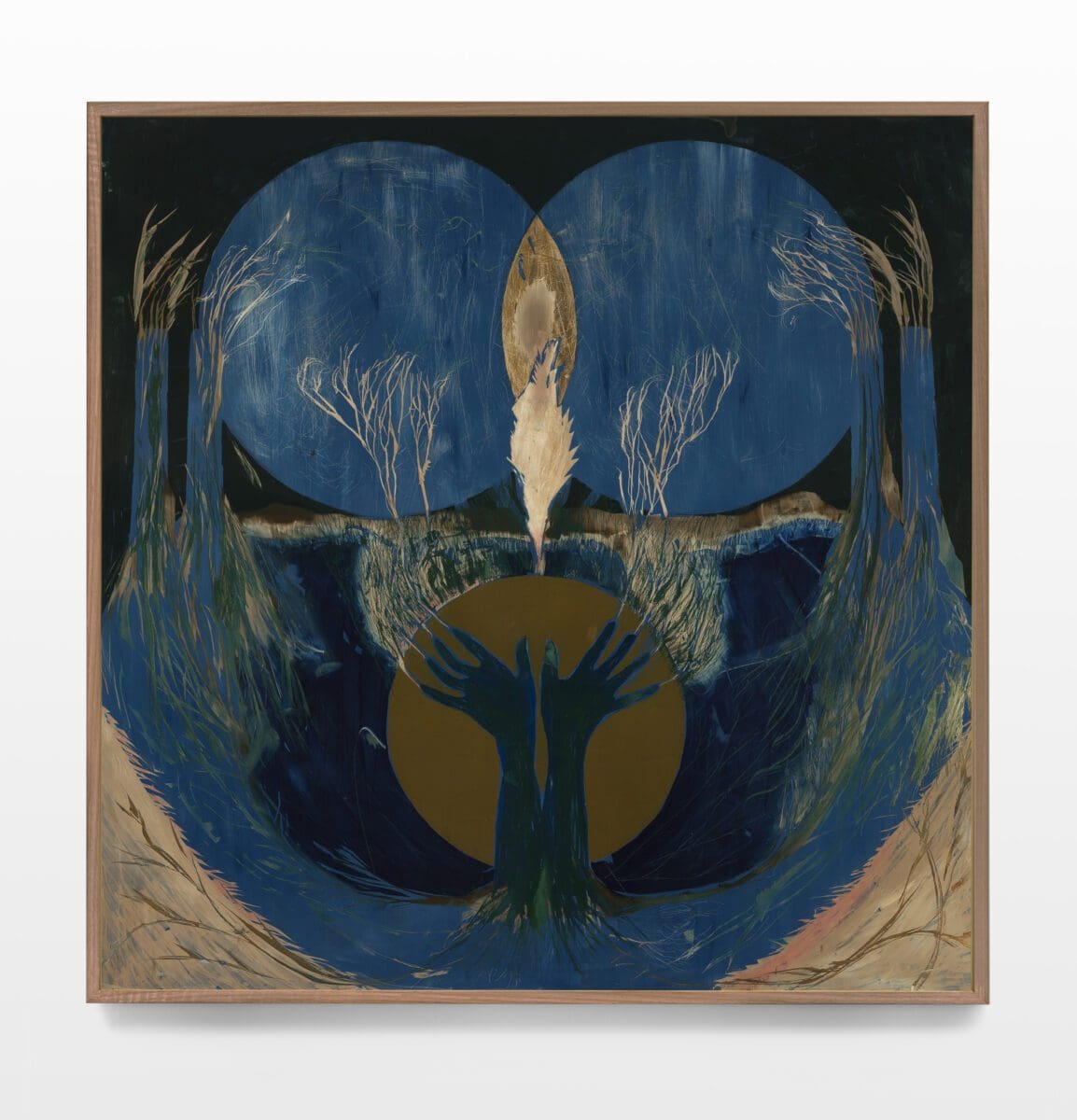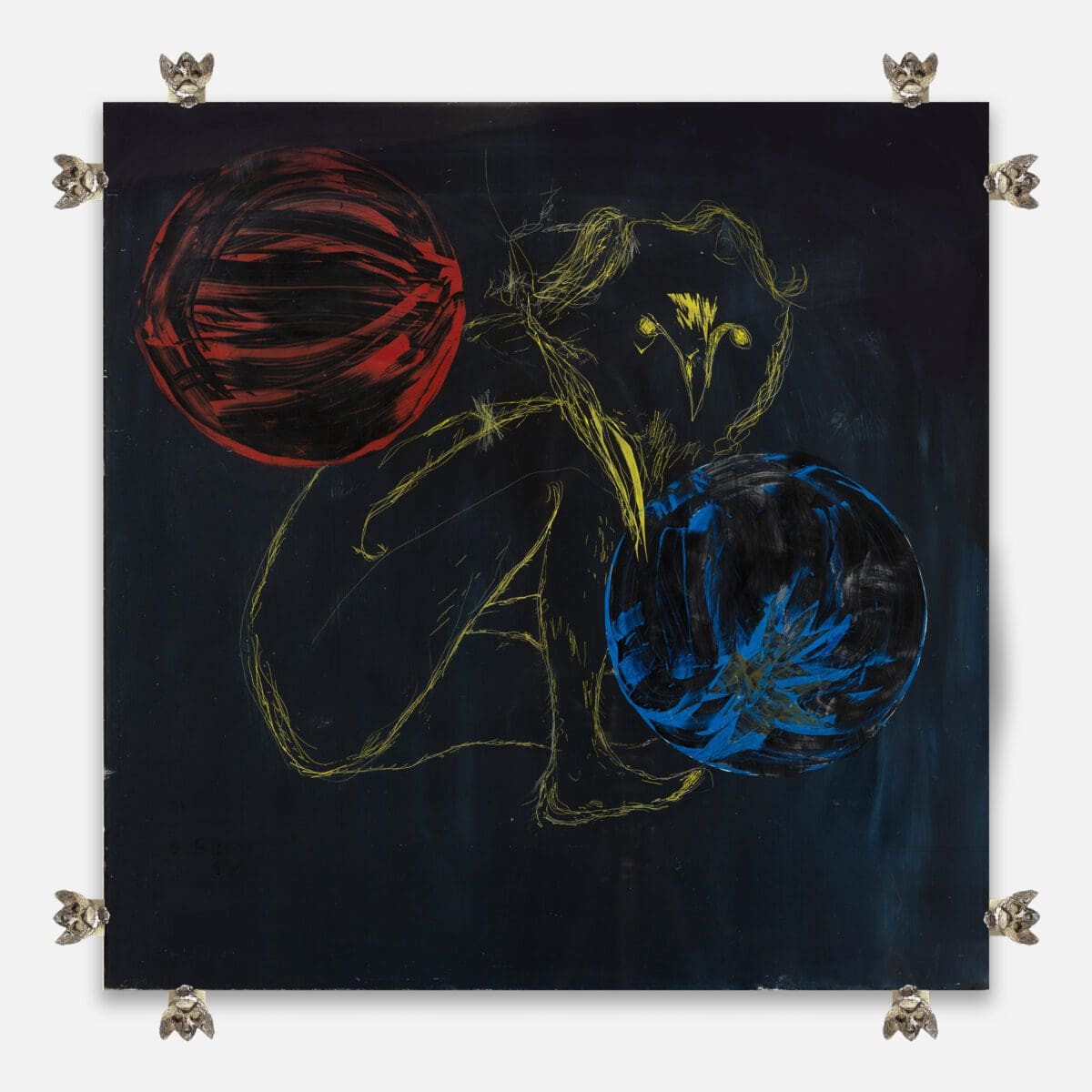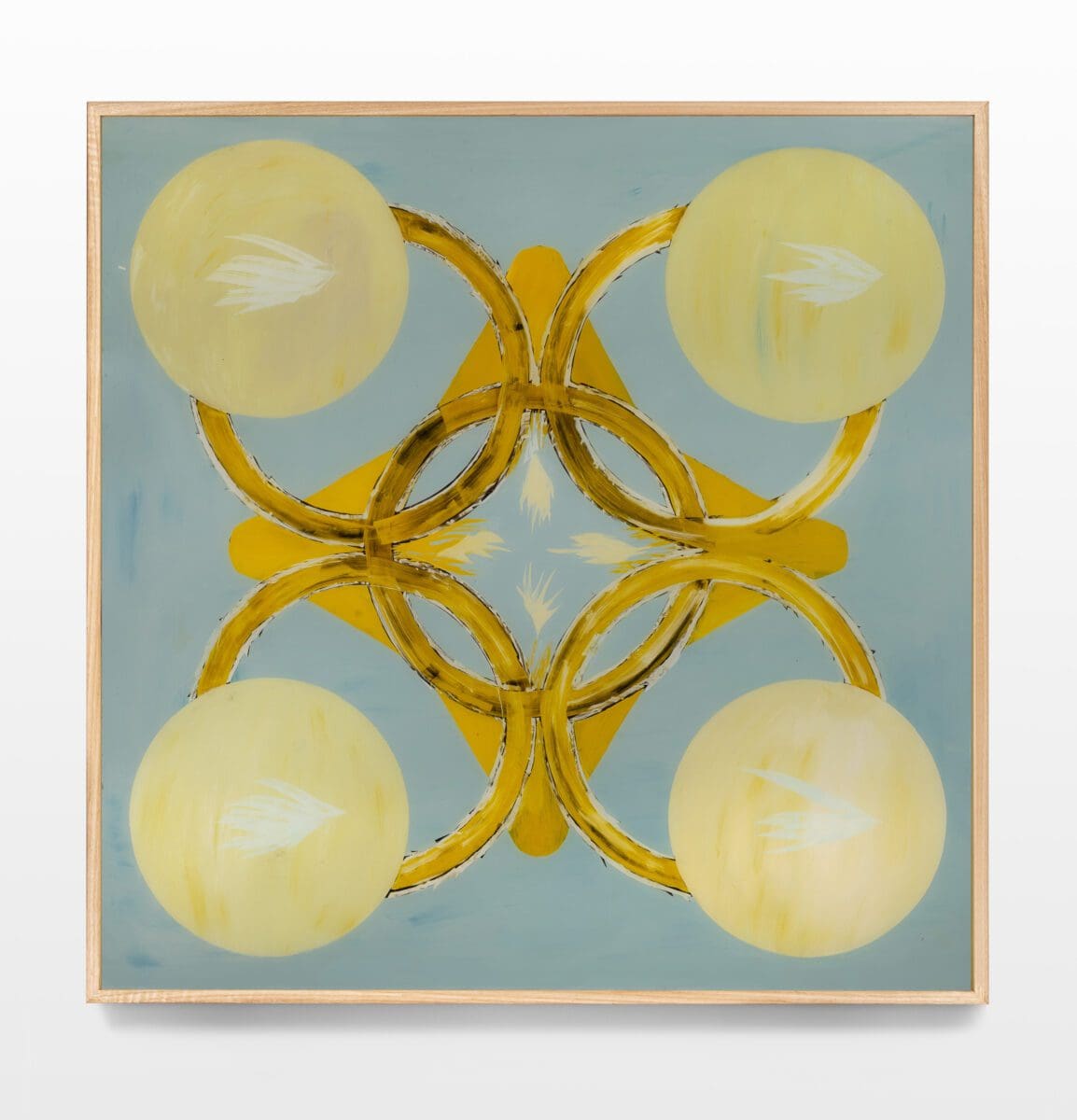
Making Space at the Table
NAP Contemporary’s group show, The Elephant Table, platforms six artists and voices—creating chaos, connection and conversation.





Some artists rely on an intuitive ability to gather, glean, and then present. Clare Milledge is one of these artists. Through almost 20 years of field-research, she collects recurring motifs and influences, sometimes following obscure historical modes of thought, and often looking at the nuances and patterns of daily life. Across textiles, installation and painting, connections between disparate objects and stories are drawn together, inviting us to question how we interpret the world around us. The artist is field-researcher, author and shaman—and the viewer becomes an archaeological research-assistant, securing findings from Milledge’s explorations.
Milledge’s newest offering at STATION Gallery Sydney, lfp mottled and green: looking for a cleric (sib),exemplifies this. For her recent installation for the 2022 Biennale of Sydney (the city where the artist lives and works), Milledge worked to a more singular thematic with flowing textiles and symbolic objects linking to Irish folklore. Now, Milledge has had the opportunity to gather what was left “on the cutting room floor”.
At STATION, she connects her interest in old Irish language to contemporary gaming, while using many of her signature visual motifs, such as circles and owls. These images have been distilled into a series of refined hinterglasmalarei paintings, framed with bronze close-readers. Through employing modes of repetition, figurative elements in the paintings become more symbol than object-centred.
While creating these works, Milledge came across the Story Archaeology Podcastby Chris Thompson and Isolde ÓBrolcháin Carmody—two women working to peel back layers of Irish folklore. Milledge found “their stories were generally tied to the landscape and ecology”. She was particularly interested in their explanations of how old Irish language is used to describe colour. In comparison to the spectrum-orientated vision of colour that we are familiar with in Australia, where shades are categorised, Irish colours are described with variability and feeling. Flann is said to be the colour of fresh blood. Glas might be the colour of the sea, which can range from gun-metal grey to deep azure to mossy green.
These expansive words allow our thoughts of the sea to reflect the ever-changing palette of the sky. The speaker has control over how a colour is understood and remembered, leaving the receiver with room for interpretation and nuance. When we allow language to broaden, we open new meanings and spaces for thinking. This mirrors the spaces Milledge creates for her viewers, empowering them to become active interpreters by connecting the objects and images she presents.

Through playing video games with her 13-year-old son, Milledge was introduced to the world of MMORPG (massively multiplayer online role-playing game). She explains, “You just go in there and you’re playing with random people. The environment is controlled. There’s no weather. I’m interested in how the rules around the game operate and where you can find glitches.”
It’s not a coincidence that Milledge has found a form of folklore language that encompasses the vastness of weather, while inhabiting a gaming world where there is no weather. For an artist like Milledge, who works through trusting her intuition, everything is connected. “Little cultures develop around the game’s lags, with patterns of people’s behaviours becoming evident. The paintings for the show were developed around those mental spaces. Similar to Irish descriptions of colour, these in-between spaces are not really known. They shift. They invite, as Milledge says, “ways of looking at something that is not completely definable”.
The exhibition title, lfp mottled and green: looking for a cleric (sib), echoes Milledge’s process of accumulating disparate influences—Irish folklore and gaming. The gaming abbreviation lfp means “looking for party”. It suggests that players are ready to play, with Milledge inviting viewers to enter into her game. Mottled and green nods to the permeability of language that interests Milledge; and looking for a cleric (sib) is a disruption to the digital conversation spaces that Milledge and her son have found themselves within.
As Milledge explains of this conversational aspect, the predominant space for creativity and identity “within these games was the chat box. Often women don’t identify themselves as women. They all call each other bruh.” Milledge’s inclusion of “sib” (which stands for sibling) as an alternative to “bruh” is a feminist nod attempting to dismantle the patriarchal culture of gaming chat. Using a word that has a much broader meaning, Milledge mirrors the process of naming those old Irish colours.
For Milledge, “The language used is crucial to the story. It always has multiple layers of understanding. In pre-written society when everything is oral, repetitions and remembering is important.” Milledge is interrupting these spaces to create new ones for us—the viewer—to inhabit. She creates space for our own interpretations.
lfp mottled and green: looking for a cleric sib
Clare Milledge
STATION Gallery Sydney
28 April—27 May